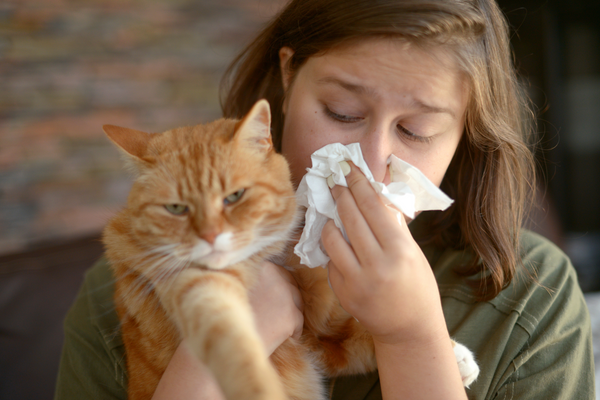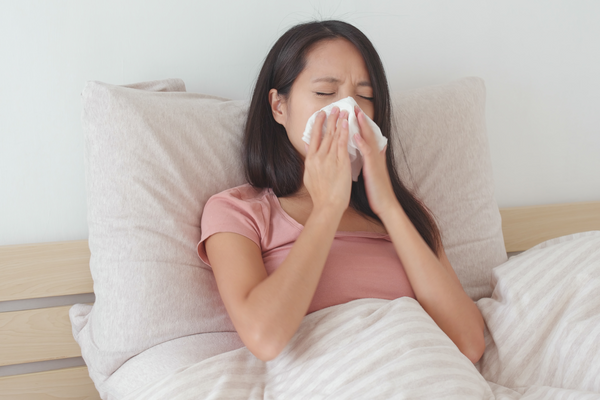The Dangers Fleas Pose to Your Pet's Health

If you have pets, it’s almost inevitable that you’ll have to combat a flea infestation at some point. Beyond the obvious fact that fleas are gross and a total nuisance, these tiny parasitic pests can also pose serious health risks to you and your four-legged friends. As a pet parent, there are some basics you should know about the risks, prevention, and treatment of fleas.
With proper knowledge, you can help protect your pet and your home from fleas. We’ll give you the details here.
Five (Not-so-fun) Fast Facts About Fleas
- Fleas have a complex, four-stage life cycle: Adult, Egg, Larva, and Pupa.
- Fleas can live for as few as 13 days or as long as 12 months – and during that time, can produce thousands of offspring.
- Though there are many species of fleas, the one that most often affects both dogs and cats in North America is the cat flea, Ctenocephalides felis.
- A female cat flea can consume up to 15 times her own weight when she feeds – which is much more blood than a flea can digest. The excess blood is excreted as feces (also called “flea dirt”) to feed larvae.
- Adult fleas, which average about ⅛ of an inch long, are capable of a vertical leap of seven inches, and a distance of more than a foot. This is the equivalent of a six-foot human being able to jump 160 feet high and 295 feet long.
Related: Fleas – What’s the Big Deal?
The Dangers of Fleas on Your Pets
Although your pet may be infested with fleas, they are not always easy to find. You’ll probably first notice the effects of fleas when your four-legged companion repeatedly scratches and chews, especially around the base of their tail. On occasion, you may actually see tiny brown fleas moving quickly through your pet’s fur. One of the best methods for checking your dog or cat for fleas is to look for flea dirt in your pet’s coat.
Flea infestations can cause a number of adverse health effects, including:
- Flea allergic dermatitis (FAD): Also known as flea bite hypersensitivity, this is the most common dermatologic disease of domestic dogs and cats in the United States. Fleas take their first blood meal (gross!) on the host (your pet) within minutes of contact. When a flea feeds, it injects its saliva directly into your pet’s skin. The saliva contains enzymes, peptides, amino acids, and histamine-like compounds that trigger a release from the host animal’s immune system. Flea saliva can cause an inflammatory reaction in animals that are sensitive or allergic to it. Some pets have an immediate hypersensitivity to flea bites within 15 minutes, while others have a delayed reaction that can take as long as 24 to 48 hours. Animals that are more sensitive to flea bites may suffer from severe itching, skin irritation, skin lesions, and major skin infections.
- Anemia: If a flea infestation is severe, the host animal may lose enough blood to become anemic. In young kittens or puppies, a large amount of fleas can actually be fatal.
- Cat-Scratch Disease (CSD): This disease is synonymously known as “Cat Scratch Fever” thanks to that 1977 rock song with the same name. You know the one – it has that catchy riff and questionable lyrics. However, CSD can actually lead to much more than a fever. According to the Centers for Disease Control and Prevention (CDC), it can also lead to headache, poor appetite, exhaustion, and swollen lymph nodes. In severe infections, CSD can also affect the brain, eyes, heart, or other internal organs. So how does it spread? CSD involves infection by bacteria of the genus Bartonella. There are 24 Bartonella species, 14 of which can infect humans and five of which are harbored by cats. The five Bartonella species harbored by cats are spread by fleas. The most well-studied and most common Bartonella organism is Bartonella henselae. Cats can transmit the organism when they are infested with fleas. Transmission can occur when cats scratch themselves and get infected flea dirt (digested host’s blood excreted by fleas) in their claws, and scratch a person (or another cat) with their dirty claws.
- Tapeworm infection (Dipylidium caninum): This type of tapeworm can be contracted after the accidental ingestion of an infected flea (during self-grooming, for example). Flea larvae often ingest the microscopic tapeworm eggs, causing adult fleas to be carriers.
- Fleas also play a role in the spread of typhus and plague.
Note: For pet health-related questions, always consult your veterinarian, as they have examined your pet, know your pet's health history, and can make the best recommendations for your pet.
The Most Effective Flea Control Methods

It can feel completely overwhelming to have a flea infestation in your home. Fortunately, there are ways to combat fleas – it just takes time and a little bit of effort. The key to success is persistence! It's important to check your pet for fleas regularly to keep fleas from disrupting your life and the lives of your pets and your family.
If your pet has a severe flea infestation, the first course of action should always be to consult your veterinarian, as your pet may require prescription medication. Minor flea infestations, or those that are discovered early enough, can usually be eradicated by thoroughly brushing with a flea comb and bathing with the right shampoo. Our Anti-Allergen Pet Shampoo helps to eliminate fleas and ticks while also neutralizing allergens from pet dander and dust mites. This plant and mineral-based hypoallergenic shampoo cleans and conditions your furry friend’s coat while being gentle on the skin. It’s free from toxic ingredients and 100% biodegradable, making it an eco-friendly choice. If your pet has a flea infestation, they should be combed daily with a flea comb and bathed once or twice per week with our gentle shampoo. Once your pet is flea-free, you can go back to your regular grooming routine unless your veterinarian recommends otherwise.
Once you’ve gotten the fleas off of your pet, the next thing you'll need to do is clean your home thoroughly. It’s important to note that only about 10% of the flea population (mainly the adults) are on your pet. The flea eggs, larvae, pupa, and the few adults that reside in the carpeting, bedding, and living areas of your home make up approximately 90% of the flea population. Flea eggs can lie dormant for weeks. Neglecting this population of fleas will ensure that the infestation will continue and worsen over time. In order to treat and prevent infestations (and especially re-infestations), it’s critical to properly treat the environment for fleas.
Start by thoroughly vacuuming all of the carpets, rugs, and floors in your home. Use a wand attachment to vacuum baseboards, behind and under furniture, and any hard-to-reach paces. As soon as you’re finished, empty the contents of the vacuum outside of your home. For best results, use a boron-based product, such as our Dustmite and Flea Control all over your home, including carpets, rugs, hardwood floors, around baseboards, and on upholstery to help eliminate fleas and prevent future infestations. Boron is a natural element that is essential for healthy plant growth and aids in the assimilation of calcium in the human body. Borates have a long history of use in insect control and are effective against fleas, as well as other pests like termites, cockroaches, and ants. Boron works by removing moisture from flea eggs, larva, and pupae, making them easier to vacuum them up. Our Dustmite and Flea Control powder dissolves completely in water and can be used as a spray or in a carpet steamer to help keep those pesky fleas away naturally. You can also use our pre-mixed dust mite and flea control spray.
Next, machine wash as many items as you can (including bedding, towels, pet beds, and any other washable materials) with an Anti-Allergen Detergent in hot water to kill and remove flea eggs, larvae, and flea dirt. Repeat the process of vacuuming and washing several times a week, starting right after you’ve treated your pets. Once you notice the population decreasing, you can go back to your regular cleaning routine. Remember, persistence is key in the battle against fleas.
If you feel you need a boost to eradicate the fleas, you can hire a professional to treat your home with a product designed to kill fleas. It’s also a good measure to treat the exterior of your home and yard for fleas. Because of the flea life cycle, exterior treatment should be done once a week for four weeks, then monthly for maintenance.
Want more tips? Follow The Ecology Works on Instagram @ecologyworks for lots of helpful pet care tips and cleaning tips, as well as environmental news. If you have any questions, please feel free to Contact Us or message us on Facebook. No question is too small! We’re here to help.





